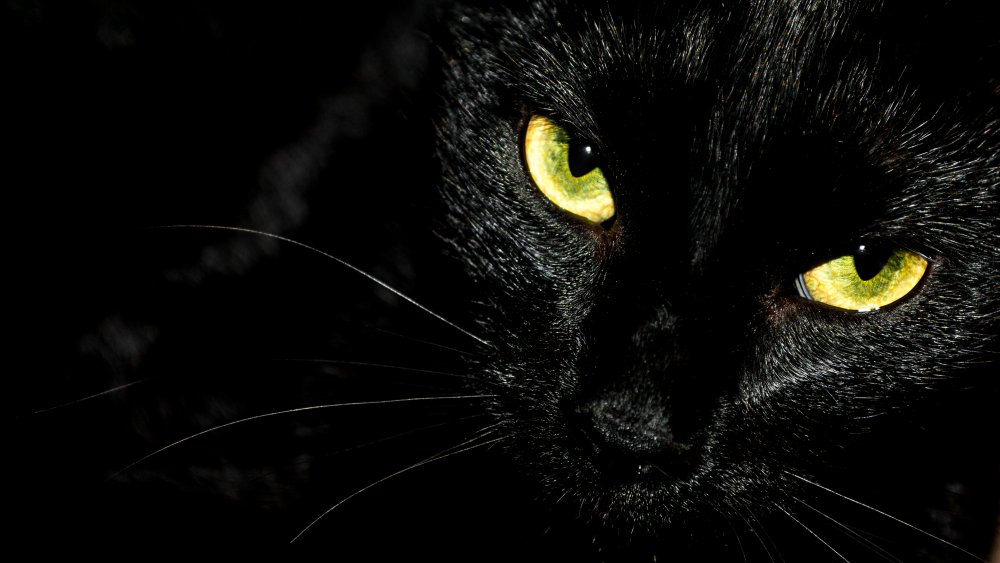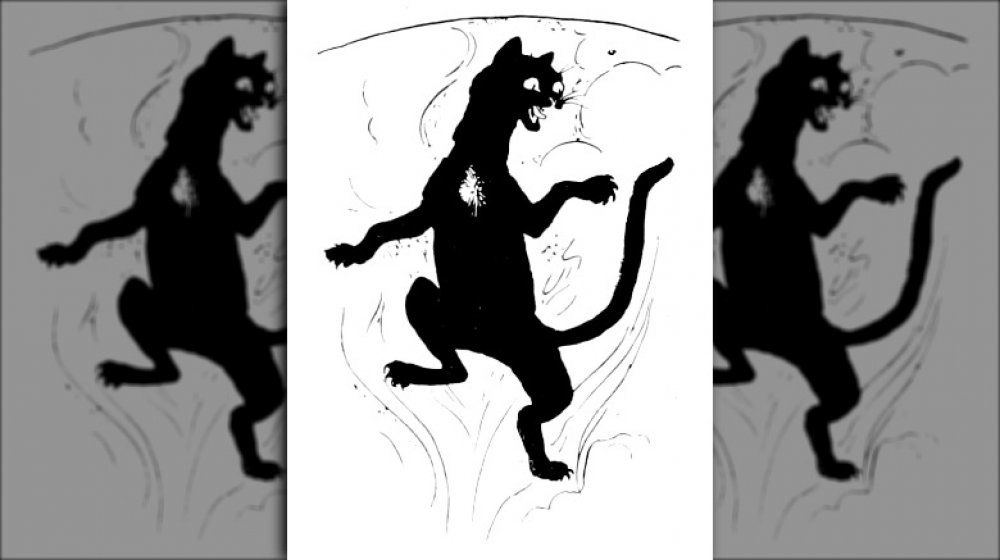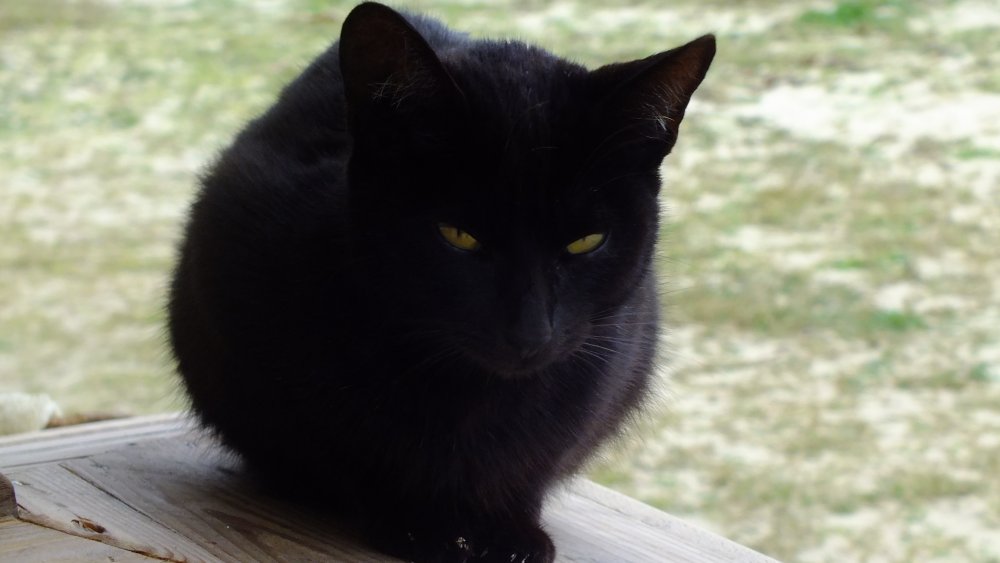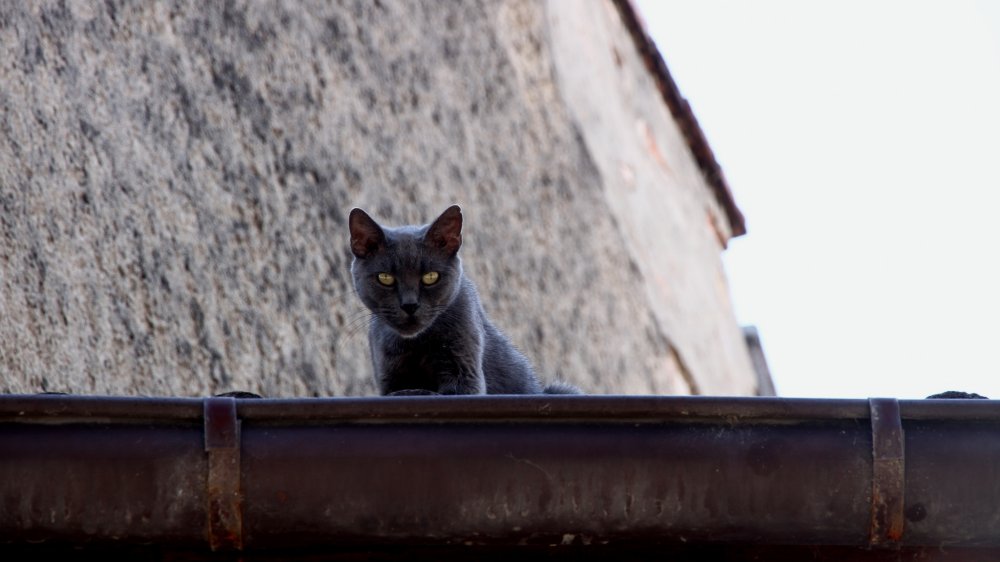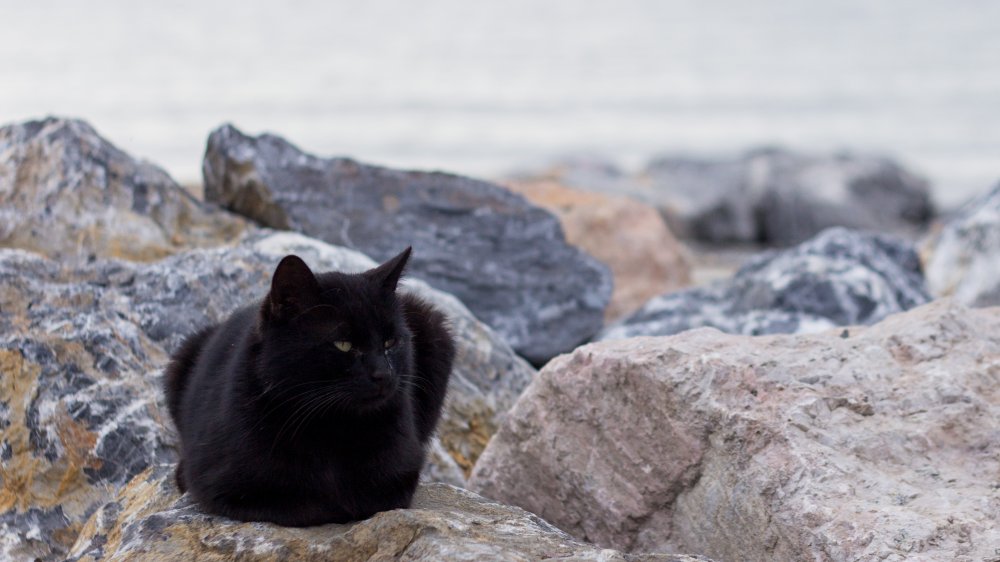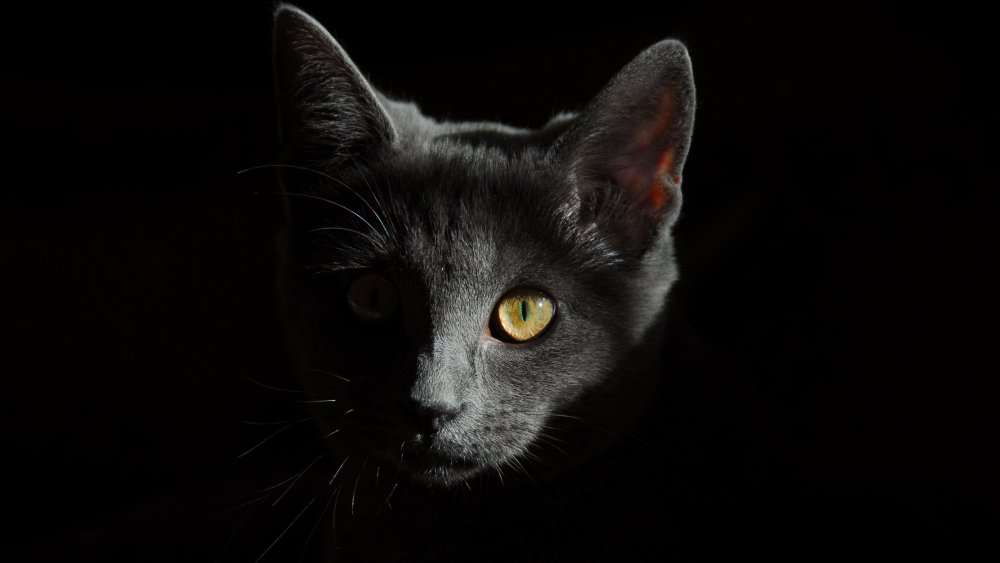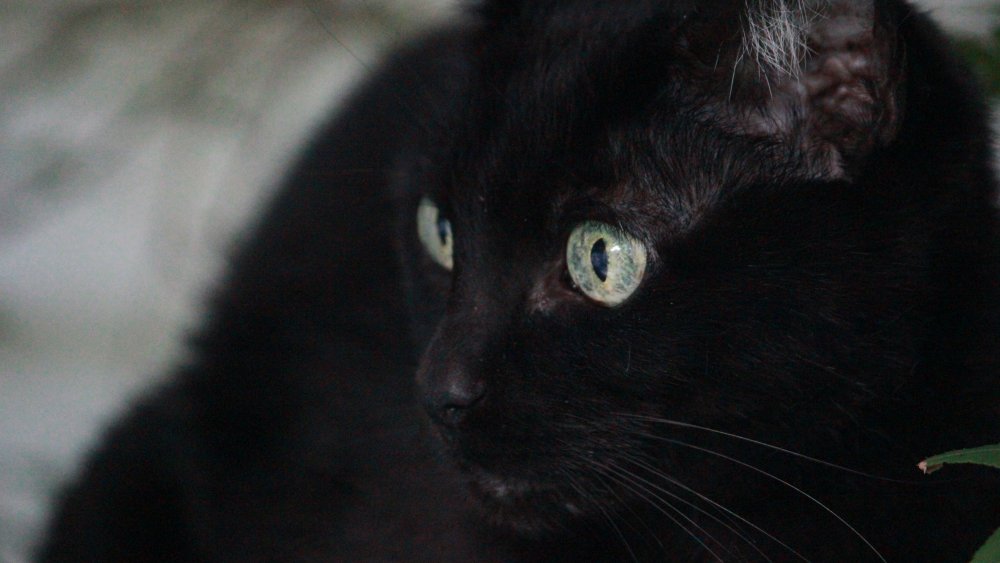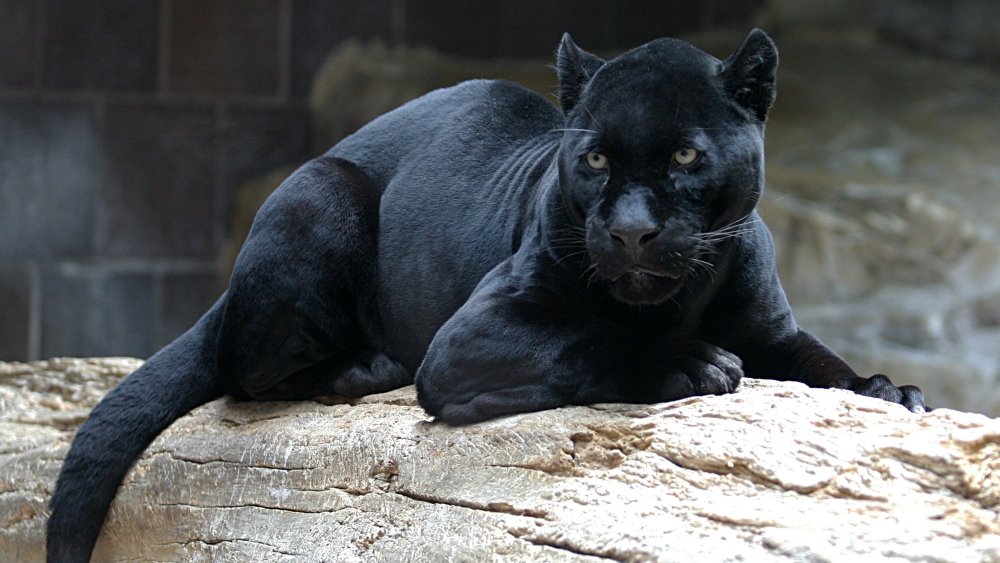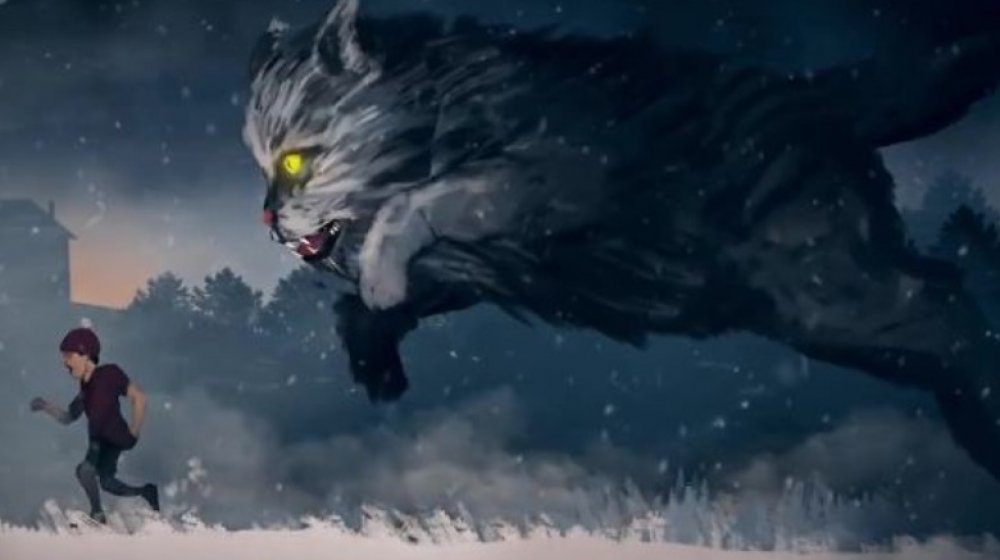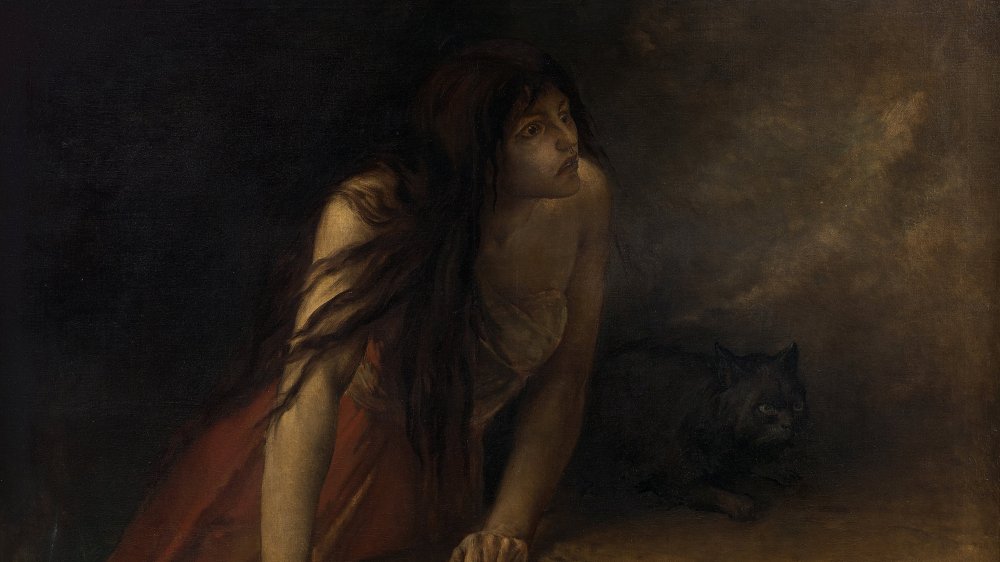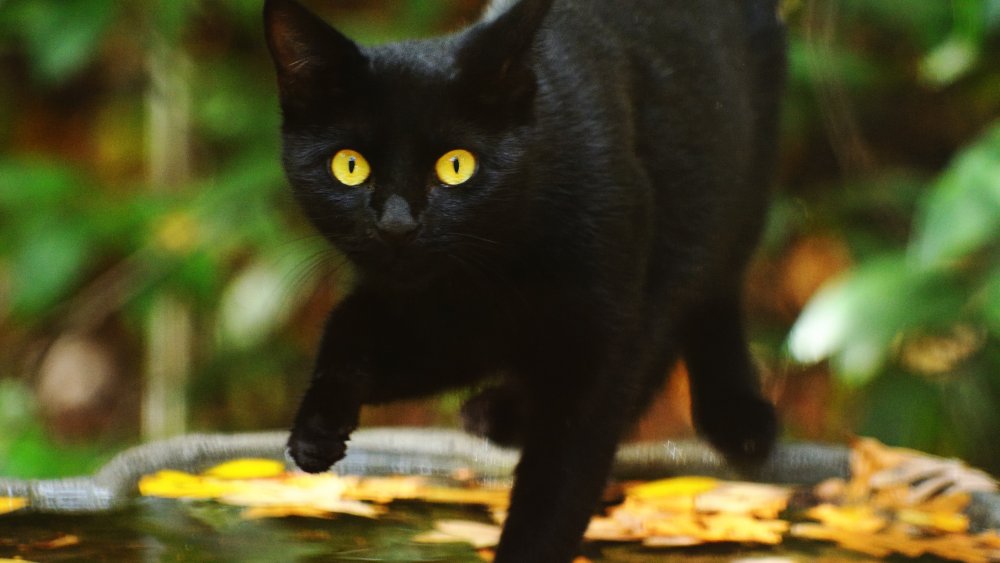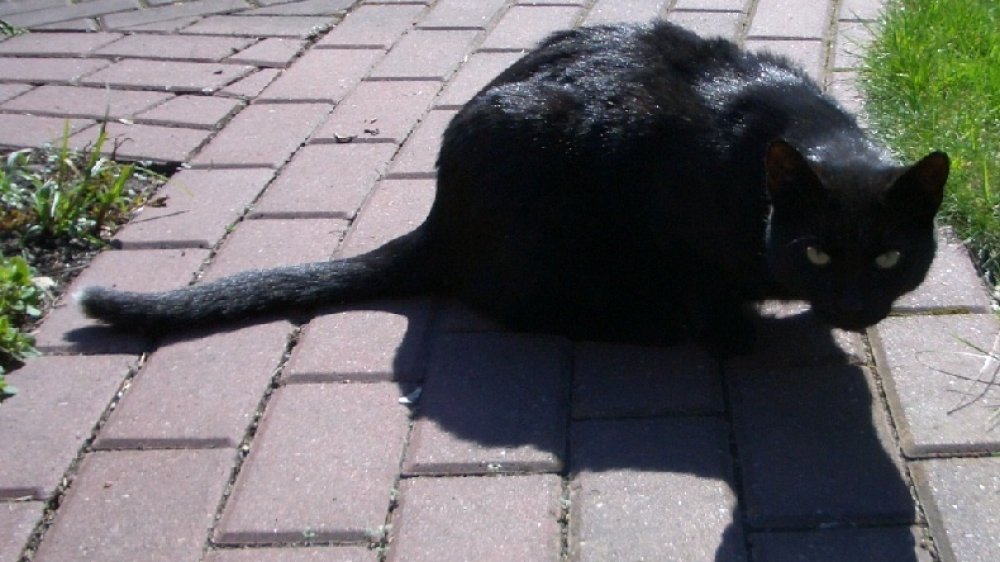The Scariest Black Cat Legends
Black cats are a Halloween staple, iconic representations of the spooky season just as much as bats, witches, or sheet ghosts. Thanks to a long association with witches, black cats have long been regarded as sources of misfortune and agents of evil. Worse yet, Instagram influencers think they don't photograph well. While it might be easy to assume that spooky black cat legends are the work of witch-obsessed Europeans, the fact is that magical and terrifying cats can be found in folklore from all over the world. Sometimes they're ghosts, sometimes they're fairies, and sometimes they're demons. But in all cases, they're full-on spook machines.
From Scotland to Thailand, from Australia to Iceland, here's a look at some of the ghost stories and folktales surrounding the unfairly maligned black cat, including a vampire cat that sucks babies' blood, a giant cat that will eat you for Christmas, and a swimming cat that killed King Arthur.
The Cat Sith will steal your soul
Celtic mythology gives us the story of the Cat Sith, also spelled "Cat Sidhe" or "Cat Si" (and pronounced like "she," not like the Star Wars people), which means "fairy cat," a fairy in the form of a black cat. As Scot Clans explains, the Cat Sith is typically described as being a black cat the size of a dog with a white spot on its chest. The Scottish people believed that the Cat Sith would seek out funerals with the intention of stealing the soul of the departed before it could be claimed by the gods by walking over the body before it could be buried. In order to avoid this, it was customary to hold overnight wakes in order to keep the Cat away from the body until it could be buried. The participants in these late wakes, as they were called, were tasked with distracting the Cat by any means necessary, including catnip, games, riddles, or music.
While the name of the Cat Sith implies that it is a fairy, other stories indicate that they were, in fact, witches who could transform into cats. They could change from human to cat and back again eight times, but the ninth time, they would be stuck as cats. On Halloween, people would leave out milk for the Cat Sith, hoping to be blessed and not cursed.
The matagot is a blessing and a curse
A matagot, also spelled "mandagot" and otherwise known as a chat d'argent (money cat), is a magical creature from the folklore of southern France. According to the BrianaDragon blog, a matagot most often takes the form of a black cat, but it can also take the form of other animals, such as a fox, rat, dog, or cow, any of which are typically in the service of a witch or other magic practitioner. While matagots were considered to be evil in nature, if captured and properly cared for, they could provide great benefit for their captor. For every meal, the matagot's master had to feed the first bite of food and first sip of drink to the creature and provide a suitable place for sleeping. If the magician could manage to maintain this practice, the matagot would provide wealth and good fortune to its owner, usually in the form of a gold coin every day (hence the name "money cat").
The other important condition to owning a matagot is to release it from its servitude before your death. If the matagot is still bound to you as you lie dying, it will make your final days miserable. If you think you can agree to these conditions, you can lure a matagot out of hiding with fresh chicken. If you can scoop it up and walk all the way home without looking behind you, you just scored yourself a money cat.
The ghostly cat of Killakee
In 1968, Margaret O'Brien and her husband bought a run-down house near Dublin with the intention of renovating it and opening it as a center for the arts. What they may not have known is that the house they had bought next to the Killakee Estate was formerly used by the notorious Hell Fire Club and was widely thought to be haunted. According to Paranormal Encounters, the O'Briens had the men working on the renovation live in the house in order to complete the job more quickly, but soon the workmen were reporting eerie sounds coming across the estate grounds at night, most notably a growling like that of a wild animal. Deciding to inspect these claims herself, Mrs. O'Brien soon found herself face to face with an enormous black cat with glowing red eyes standing in her hallway. She said that it glowered at her with a hateful and menacing look but disappeared as quickly as it had appeared.
After a few more encounters with the spectral cat of Killakee House, Mrs. O'Brien called a local priest to perform an exorcism to drive out the ghostly cat-beast. Afterward, there were no sightings of the cat, the arts center was able to open, and guests were able to stay unharmed. That is, until a group of drunk actors decided to hold a séance, after which the cat, as they say, came back.
You never know if your cat is a king
There is a British folktale known as "The King O' The Cats," which deals with the idea that we might be surrounded at all times by a supernatural society of which we know nothing. In the story, the wife of a gravedigger sits at home with her black cat Old Tom waiting for her husband. Finally, he bursts in, later than expected and in a panic, asking, "Who's Tommy Tildrum?" He then explains that he was digging a grave when he heard a meow. When he looked up, he saw nine black cats with white spots on their chests (indicating they were probably Cat Sith), all carrying a tiny cat-sized coffin. The largest cat approached the gravedigger, his eyes flashing green, and said in a squeaky voice, "Tell Tom Tildrum that Tim Toidrum's dead." Confused at the instructions and terrified of what he had just seen, the gravedigger ran home to his wife, who it turns out also doesn't know who Tom Tildrum is.
Someone knows, though: Their cat Old Tom, who had been listening intently and meowing as the gravedigger told his story, soon jumps out of the wife's lap and shrieks, "What — old Tom dead! then I'm the King o' the Cats!" At this, Old Tom zips up the chimney and is never seen again.
The giant cat that drowned King Arthur
Welsh legend tells of an enormous black cat known as the Cath Palug, whose name is traditionally said to mean "Palug's cat" but which might derive from a word meaning "clawing" or "scratching." According to Jones' Celtic Encyclopedia, Cath Palug was born from a giant white pig (normal cat stuff) and had as siblings a wolf and an eagle, all of whom were sources of terror for the British Isles. The pig's owner saw the giant monster cat and threw it into the sea, where it swam ashore at Anglesey. In the Welsh poem "Pa Gur" ("What man?"), Cath Palug is said to have killed 180 warriors before it was (presumably) killed by Cai, aka Sir Kay, King Arthur's jerky older foster brother. We have to say "presumably" killed, because the poem is fragmentary, and we never see what happens after Cai goes to Anglesey to kill lions and encounters a different kind of cat.
In French versions of the story, it's Arthur himself who battles the Cath Palug, whose name is often rendered as "Chapalu" in French. In L'estoire de Merlin, Arthur faces the devil cat after it has terrorized the countryside. Arthur at last manages to kill the cat with his shield, but this isn't the case in every version: Le Roman des Franceis says Arthur was killed not by Mordred but by the Cath Palug, who threw him into a bog.
The cha kla will kill you with dysentery
According to The Journal of the Siam Society, Thai ghost lore tells of spirits known by the general term pi, which can be either good or bad. These can range from the pi ruen, which is basically a guardian angel of a house, to the pi kahang, which looks like a person with bird's feathers and eats poop, to the pi pong kang, a black monkey that sucks blood from a sleeping person's big toe. One such spirit is the pi cha kla, or just cha kla, which looks like a cat with completely matte black fur. Cha kla are typically under the command of jungle sorcerers who send the cats out to attack their enemies.
Besides being completely black, a cha kla can be recognized by the fact that its fur grows back-to-front as well as its blood-red eyes. Despite the fact that this ghost is meant to be a shaman's killing machine, it is nevertheless skittish around humans. It only comes out at night, and if it sees a human, it will dig a hole and hide in it until the person goes away. That said, the cha kla can kill with just a look or a touch. Anyone who sees or touches a cha kla will die. Siam Society tells of a village elder who attributed the death of his son by dysentery to contact with a cha kla.
A Demon Cat haunts the US Capitol Building
Washington, DC, has played host to innumerable monumental events and personages and is, of course, replete with ghost legends. Besides the various ghosts said to haunt the White House — including no less a figure than Abraham Lincoln himself — the US Capitol building is said to host a number of spectral figures, including a wandering Civil War soldier and the ghost of John Quincy Adams. However, perhaps the most famous spirit from the nation's capital isn't a politician or even human: It's the Demon Cat.
According to Atlas Obscura, sightings of the ghostly feline go back to at least the 19th century, when after the Civil War, a night watchman claimed to have been approached by a black cat that got larger and larger as it grew closer, until it was the size of a tiger. This monster cat knocked the guard down and disappeared into the ether. Legend states that the Demon Cat appears just before national tragedies, such as presidential assassinations. Other legends claim that those who witnessed the cat died of fright. Evidence of the cat's existence includes paw prints embedded in concrete in the Small Senate Rotunda and the letters "DC" imprinted elsewhere. A cat that can grow to tiger size and disappear is frightening enough, but one that's also literate is terrifying to think about.
A strange black panther in the Australian mountains
Among the various types of cryptids believed by some to roam this earth, one subcategory is known as phantom cats or alien big cats (ABCs). Despite the fantastical names, these cats are neither ghosts nor extraterrestrials but rather big cats like lions or jaguars in places you wouldn't expect them, like American suburbs or the bathroom of a Burger King. One such phantom cat is the Blue Mountains Panther, which, as the Cryptid Wiki explains, is a large black cat that has been sighted in the Blue Mountains area west of Sydney, Australia, for over 100 years.
In the past century, there have been hundreds of reports of encounters with a black, panther-sized cat in this area, but the only evidence to date has been eyewitness accounts, mutilated cattle, and cat-like scratches on trees. In recent years, reports have become more frequent, including a young boy who was scratched by a large black cat. Those who believe that the panther isn't just a large housecat (such confusion has happened more than once and has ended tragically at least once) think that maybe the panther or panthers are descended from escaped circus cats, cougars imported by Americans for use as guard animals at gold mines, or military mascots left behind after World War II. But so far, there's no concrete evidence for the existence of a free-roaming jungle cat on the loose in suburban Australia.
The Yule Cat wants to eat you for Christmas
Iceland has a number of fascinating customs when it comes to the celebration of Christmas. While other countries might expect to see Santa Claus or Father Christmas put goodies in their stockings and presents under their tree, kids in Iceland expect 13 trolls to come down from the lava fields and lick all their bowls or steal all their sausages before leaving some treats in their shoes. These are the Yule Lads, the 13 sons of the ogress Gryla, who can hear children misbehaving all the way up in her cave and wants nothing more than to put naughty children into her stew. But Gryla and her spoon-licking, candle-stealing, sausage-swiping sons aren't all that lurk in the dark Christmas season: Gryla's enormous, child-eating feline companion, the Yule Cat, is also on the prowl during the holiday season.
As Smithsonian Magazine explains, the Jólakötturinn, or Yule Cat, is an enormous cat bigger than a house, who sniffs around the town looking to gobble up anyone who didn't receive new clothes for Christmas. Although most American children would view clothes as about the worst kind of gift to get, for Icelandic children, they're a lifesaver. Having new clothes was a sign that a child had behaved and that their family had made sure to properly prepare for the winter season, and the threat of the Yule Cat serves as incentive to reinforce that behavior.
Black cats get witchy
The most famous superstition about black cats is, of course, that they are bad luck, especially if one walks across your path. In an investigation into this particular folk belief, PetMD explains that negative associations with black cats (and other black animals) go back centuries and have largely to do with linking these animals to witchcraft. As far back as the ancient Greeks, legend told of a servant transformed into a black cat by the goddess Hera who then went on to become the attendant of Hecate, the goddess of witchcraft. By the Middle Ages, black cats were among the most common animals believed to be familiars of witches, and it was generally believed that many witches could take the form of black cats themselves. As panic over witchcraft grew in Europe, cats often bore the brunt of that superstition and were executed in large numbers.
The association between black cats and witches and devil worship has only somewhat diminished in the popular consciousness. Even in modern times, urban myth often tells of devil worshipers or other unsavory sorts sacrificing black cats to Satan on Halloween. This is, of course, Satanic panic nonsense, but some animal shelters are cautious about adopting out black cats in October due to worry about those who might try to replicate the legend or persecute an animal for being too witchy.
How Adam's first wife became a cat
Perhaps because cats were so associated with pagan worship by civilizations such as ancient Egypt, Jewish folklore often relates cats to demons. In fact, in Sephardic folklore (that is, among Jews of Spanish and Portuguese descent), it is believed that Lilith, Adam's first wife before Eve who was banished from Eden because she refused to submit to her husband, transformed into a demonic black cat called El Broosha. According to Cat's Most Wanted, this demon cat prowled around looking for its favorite prey — newborn babies — and when it found them, it would suck their blood. As a result, it was a custom for mothers never to leave their babies alone until they were at least nine days old.
One story of this demonic cat tells of a nurse who has to leave a mother and baby alone for a moment, and when she returns, the mother tells her that she has just dreamed that a black cat snuck into her room and transformed first into a jar and then back into a cat when it heard another cat meow from outside. It then took the baby from its bed and threw it out the window to another cat waiting outside. The nurse realizes that this wasn't a dream when she looks out the window and sees a black cat running away with the baby.
Sometimes you can't wait
A well-known spooky American folktale is "Wait Until Emmet Comes," which you might recognize from Scary Stories to Tell in the Dark, where it's collected under the title "Wait Till Martin Comes." In this story, a traveling preacher takes shelter in an abandoned mansion during a storm. He has heard rumors that the house is haunted, but he feels confident that God will protect him. He builds a fire in the fireplace and sits down to read his Bible. Soon, he hears a sound and looks up to see a large black cat stretching itself. The cat curls up in the coals of the fire, looks the preacher in the eye, and says, "Wait until Emmet comes."
Minutes later, a second cat, midnight black and the size of a large dog, enters the room and joins the first cat among the coals. He asks the first what they will do with the preacher. The first says, "We should not do anything until Emmet comes." A third cat, as large as a tiger, enters the room, rolls around the coals, chews them up, and spits them out. "What shall we do with him?" he asks the others. "We should not do anything until Emmet comes," is the reply. The preacher closes his Bible, stands up, and essentially tells the cats, "Thanks for the company, but when Emmet gets here, tell him I had to go."
